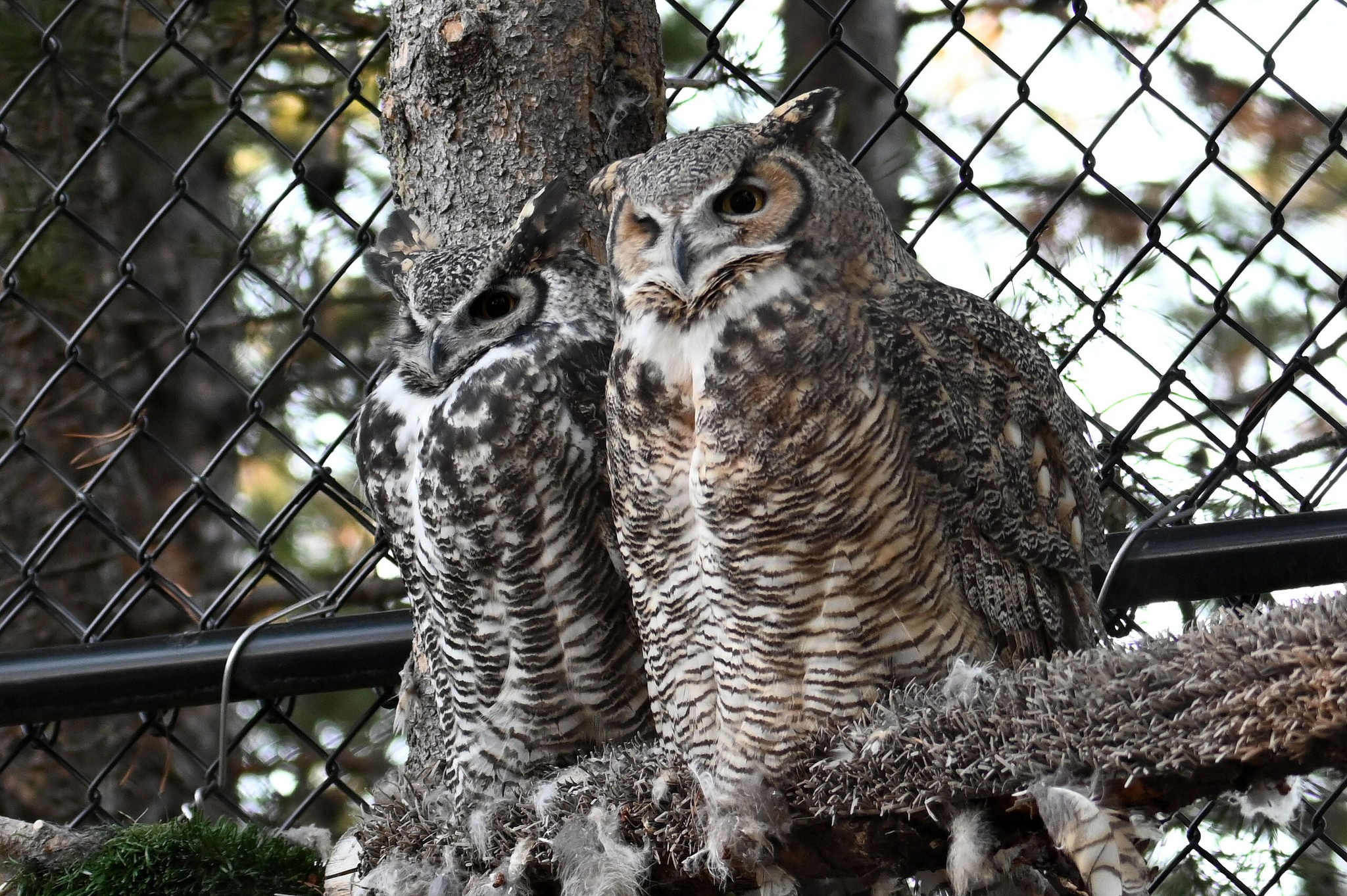Summary:
1. Raptors returning to their habitats at the zoo
2. Animal keepers preparing the habitats for bird exhibits
3. More birds will be placed on exhibit as habitats become ready
4. Introduction to two Great Horned Owls named Stretch and Clark
5. The unique and fascinating aspects of raptors
This week at the zoo, we had the pleasure of welcoming back a few raptors to their habitats. It’s always an exciting time for the animals and the animal keepers when they can be reunited with their natural surroundings. Our dedicated keepers have worked tirelessly to prepare the habitats and ensure every bird has a comfortable and enriching environment.
The process of preparing the habitats is no easy feat. Each habitat must mimic the natural surroundings the raptors would find in the wild. This means incorporating various elements such as trees, perches, and even artificial rocks to create a realistic and stimulating environment. Not only does this provide the birds with a sense of familiarity, but it also allows them to engage in natural behaviors like hunting and nesting.
As each habitat becomes ready, our animal keepers carefully select the birds on the exhibit. It’s important to ensure the birds are compatible with their new environment and can thrive in it. This requires extensive knowledge of the species’ behavior, social dynamics, and individual needs. Our keepers take great pride in their work, and their dedication shines through in every decision.
Let me introduce you to two Great Horned Owls who have returned to their habitat – Stretch and Clark. Stretch is a 9-year-old male, easily identifiable by his impressive wingspan and majestic presence. He’s known for his exceptional hunting skills and has proven to be an invaluable ambassador for his species. Clark, on the other hand, is an 8-year-old female named after the renowned naturalist Jane Goodall. She’s an incredible flyer, capable of soaring through the sky with grace and agility. Together, they form a remarkable pair that captivates the hearts of visitors.
Now, let’s delve into the unique and fascinating aspects of raptors. These birds of prey have evolved to become masters of the skies and command our admiration with their incredible abilities. Here are a few intriguing facts that will surely pique your interest:
1. Extraordinary Vision: Raptors possess exceptional eyesight, often estimated to be eight times better than humans. This keen vision allows them to spot even the tiniest movements from incredible distances, making them highly efficient hunters.
2. Powerful Talons: Raptors have strong, sharp nails adapted for catching and gripping prey. These formidable weapons enable them to precisely snatch their victims and hold them firmly during flight.
3. Silent Predators: Many raptors are noted for their near-silent flight. Specially modified feathers on their wings reduce turbulence and noise, allowing them to approach their prey undetected. Their stealthy nature is truly awe-inspiring.
4. Impressive Adaptations: Raptors’ various physical adaptations contribute to their hunting prowess. For example, their hooked beaks are perfectly suited for tearing flesh, while their flexible necks enable them to swivel their heads almost 270 degrees, providing a wide field of view.
5. Ecological Significance: Raptors play a crucial role in maintaining the balance of ecosystems. They help control populations of rodents and other small mammals, which can otherwise wreak havoc on agricultural lands. As apex predators, they ensure a healthy and sustainable environment for all.
As you can see, raptors are truly remarkable creatures. Their return to their habitats at the zoo marks a significant moment in our ongoing commitment to conservation and education. We invite you to come and witness the beauty and splendor of these feathered wonders firsthand. The sight of Stretch and Clark and the other birds to come will inspire and uplift your spirits. Join us in celebrating these magnificent creatures and let their presence remind us of the incredible diversity and wonder of the natural world.
*****
Source Description
This week, we welcomed a few raptors back to their habitat! Animal keepers prepare the habitats and place more birds on exhibit as each habitat becomes ready.
Image: 9-year-old Great Horned Owl Stretch sitting left of 8-year-old female Great Horned Owl Clark.


